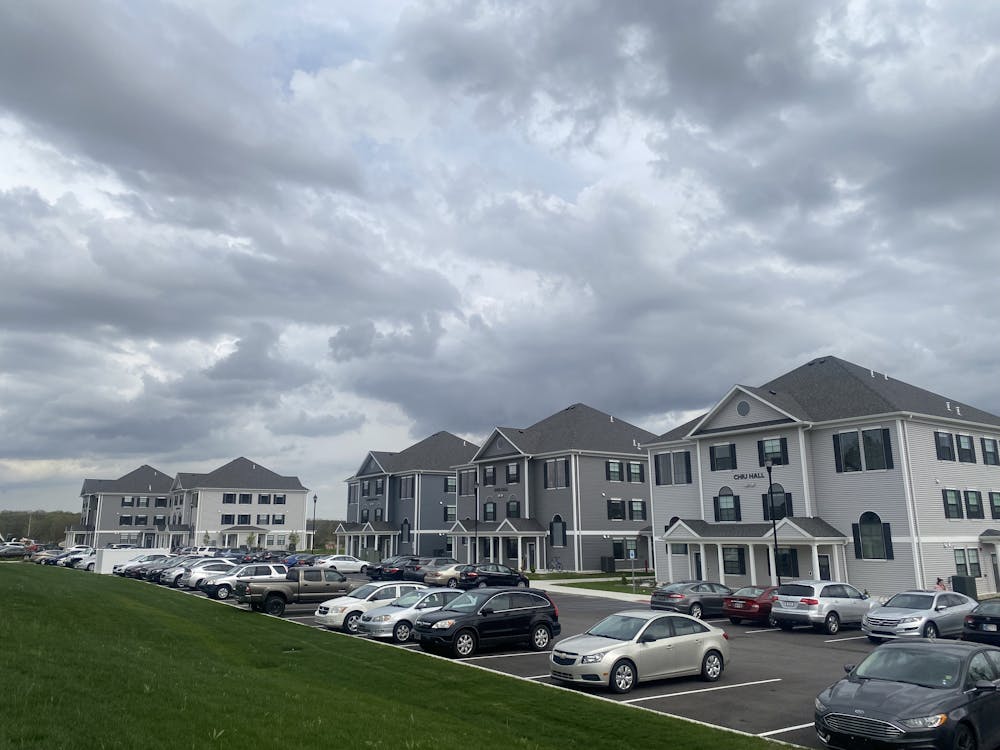The Taylor administration welcomes another historically large class in fall 2025.
The growth requires adjustment from students as parking shifts to the outskirts of campus. Residence life will continue expanding to include more townhomes.
As enrollment grows, “all students in all residential spaces have and should expect good experiences,” Skip Trudeau, vice president for development and intercollegiate athletics, said in a campus email on April 7. Taylor will continue to a discipleship-focused campus with a strong residential culture.
Two new townhomes — building six and seven — are being added to the residential village on the south side of campus.
While building seven is projected to be completed by arrival day, building six may take longer, Trudeau said. The university may rent hotel rooms for students to stay in until their rooms become available at the end of August, he said, although he hopes that won’t end up happening.
He said town homes are a long-term option for expanding Taylor’s residential capabilities. The buildings typically take five to six months to build. The current plan allows for the construction of 12 townhomes.
A new dormitory, which takes longer to build, is approximately two years away from completion, he said.
Chris Jones, vice president and chief of staff, said Taylor University assembled a taskforce to assess the campus’s growing needs, including class-seat availability, chapel space, dining and parking.
Parking will also expand in response to student enrollment, though he said there is already room for growth. A recent study conducted by the university found there were 1,873 parking spaces designated for general parking and 646 designated for faculty, staff and visitors. Yet Taylor only sold 1,483 parking permits this school year.
The numbers do not account for parking spaces blocked off due to construction, he said.
The new buildings will be part of a move toward a more walkable campus, which will force new parking lots to the periphery of campus.
“There is a bit of a culture of driving across campus and parking right near the building you are going to, but as we grow, that will need to change,” Jones said. “We are working hard to ensure there are enough parking spaces at Taylor to accommodate all the vehicles, but they may not always be in the locations that people want them.”
Holly Whitby, vice president for enrollment and marketing, said Taylor is currently in its third year of strategic growth, part of a five-year plan to increase total enrollment to 2,500, or 2,300 undergrad and 200 graduate students. Next fall, total enrollment is expected to swell to approximately 2,200 to 2,300 students, she said.
Though Taylor is on a scheduled growth track, Trudeau said the pace of growth is faster than what the university expected.
Taylor saw record enrollment in the fall of 2024 that totaled 2,056 traditional undergraduate students, according to a document shared with The Echo.
Whitby said the 2024 peak is a return to form: it’s only 64 above the 2009-2010 record of 1,992 traditional undergraduates.
Whitby attributed much of Taylor’s growth to word of mouth.
“Many of our students come from referrals from families that already have students here,” she said. “When families talk positively about Taylor, it fuels growth more than any other marketing strategy we could produce ourselves.”
Thirty-two percent of Taylor’s enrollment was made up of students with at least one sibling or parent who attended Taylor, according to a press release posted on Aug. 23, 2024.
Senior Jonathan Stiver, a Personnel Assistant on the first floor of Bergwall Hall, said he could tell students were disappointed when it was announced in chapel last fall that the current class would be another record-setter.
“I think that we’re expanding a little faster than we should be,” he said. “But I think ten years from now, people are going to look back and say, this was good for the university.”




